HOME


Reposted
Taken from Gate of God. Copyright © Gary Osborn 2003. All Rights Reserved.

"Where the skull divides there lies the Gate of God".
The Taittireeya Upanishad

The history of the world is profoundly scattered with elements of mystical enlightenment and all the wonderful symbolism that surrounds them.
From ‘cosmic precession’ and ‘ley lines’ to crystals and “magic mushrooms” there is a whole range of different theories, which endeavour to explain the unusual effects.
However, there is one paramount and unique portion of this folklore which is utilised by all of them and held up as being the most important aspect of the human mystical experience.
As Philip Gardiner and I have shown in our books, The Serpent Grail and The Shining Ones, something of importance is being referred to in the myths and legends associated with the Grail and this “something” exists in the head, or rather the brain. Those readers, who are familiar with “new-age” literature and its various concepts, would say that this “something” must be the pineal gland.
Is the pineal gland, the ‘seed,’ the Philosopher’s Stone? The Philosopher’s Egg?
For those readers who were already under the impression that this “seed-stone” or “egg” is the pineal, it would be a logical conclusion to make.
As to what the esoteric function of the pineal might be, there have been thousands of explanations from the far-fetched idea of the pineal being an “alien implant” to the equally “new-age” idea of the pineal being a “cosmic communication device”.
However, after everything we have looked at during the course of our research, it is only now that we are truly able to see the real significance in this peculiar biological device something the ancient cultures we know of may have also noticed, or the knowledge of which had been passed onto them in the form of analogy, metaphor and symbolism.
In eastern mysticism the pineal gland is linked with the ‘Third Eye’ the second sight or the mystical, or inner, psychic vision, which is believed to be man’s “doorway” towards enlightenment and the “glory of god”.
For many mystics, the pineal is said to be associated with the sixth chakra vortex the brow chakra or Ajna.
I am now going to put to rest some ‘old age’ and “new-age” misconceptions about the pineal gland.
It has been said and believed and mostly in the “new-age” literature that the pineal gland is the fabled, mystical, occult and esoteric ‘third eye’.
Some will say that the ‘third eye’ is the pituitary gland, and others, that the ‘third eye’ is both the pineal and the pituitary. Many of us still believe that the so-called “third eye” is a fanciful notion and doesn’t really exist.
There is surely much confusion here, and it is evident now that this uncertainty cannot be resolved by just stating or believing that there is no such thing as the ‘third eye’ especially if our ancient ancestors believed in it and everything we find is leading us to it.
In my view the significance of the ‘third eye’ is all part of the 'Grail Code', linked to something we have yet to discover at Giza in Egypt. The following lends some clues as to what we are dealing with in regard to this code, which I am attempting to reveal in full.
The Brain Centres in Architecture
It is obviously a truth to state that the ancients dissected the human body and it is self evident that they or possibly an unknown and advanced culture before them did the same with the brain.
When we overlay the side-view of the human head onto many sacred places we discover a remarkable thing. The centre of the brain, the eyes, the mouth, the seventh Chakra at the bregma or crown of the head, and its centre, ‘the bindu’ above the head, all seem to match up with important elements of the architectural or archaeological site.
We should note that the monk’s tonsure (popular during medieval times) was really in reference to the crown chakra and the bindu point above the head by which one is connected to the ‘godhead’, and was an alternative to trepanning (opening) of the skull), as practised by the Merovingians and also in ancient times and by many different cultures.
Jesus was crucified at the place of the skull, calvary and golgotha, bith mean skull in greek.
Of course, we have to remember that these are sites that have ancient links. It is a recorded fact that many of our modern churches are built upon much older sacred sites which some say are linked with the energy paths of the earth.
Although the “new-age” view of Ley Lines and Dragon Paths is limited in my view, it is a startling discovery to find that sacred sites are linked to the very mind or nous, and we were to discover that this amazing fact would lead us on yet further paths of enlightenment.
After finding these correlations in many old sacred buildings, churches and cathedrals, Philip Gardiner and I finally attempted this overlaying with Lichfield Cathedral which I will describe here as an example. The reasons are quite simple. It is a place close to Philip’s hometown geographically, and it is a place that Philip believes is involved in the wider story of the Grail.
Godfroi de Bouillon the first crusader to become King of Jerusalem in 1099, and in all but name, is made immortal in a wonderful statue on the external, south transept. Godfroi, as we discovered, would become more and more important to the central tale of the Grail story and intrinsically linked with not just the propaganda of the story, but also the whereabouts of one of the Grails but this perhaps would have to wait for a future book.
On the other side of the Cathedral near the ‘Chapter House’ there is the famous Seal of Solomon, large as life, high up in the elegant window. This again, was important to the legend of the Grail, but again, the reasons must wait.
The most important aspect of the symbolism employed at Lichfield however, is the image of Christ within the west doorway. He is seated high up in the archway of the door.
Surrounding him are all the animals of the fields. (your animal mature). It is an image reminiscent of the ‘Horned Man’ or Cernunnos that we see in relief on the side of the Gundestrup Cauldron and elsewhere right across Europe as if this connection was meant to be acknowledged.
As with the Gundestrup Cauldron, the ‘Horned Man’ is surrounded by beasts; but the most important aspect is, that he is in control and therefore utilizing the power of the serpent. The other animals are there, but it is the serpent, which gives him the power and for a reason which I will reveal later. The animals are always associated with our lower or animal nature.
In the image of Christ at Lichfield it is the serpent in the style of the immortal and eternal Ouroboros that he is seated above; crushing it below him and therefore having the power of the serpent symbolically transferred to himself.
Now, all of this (and there is more at Lichfield) is very interesting and links the story of medieval Christianity to the early Ophite and ‘snake cults’ of the ancients.
But, what does all this have to do with these power centres within the brain?
As I previously discovered, by overlaying a side-view cross-sectioned image of the human head and brain onto the ground plan of ancient sacred sites, we could reveal links between the important glands inside the head and thus show that the architects understood what was really inside the brain.
Well, quite simply, by overlaying the image of the head onto Lichfield we found that the eyes looked directly out of the mystical north door. The centre of the brain the Thalamus is positioned exactly in the centre of the Cathedral.
The crown chakra was exactly where the great altar was situated and the throat chakra ran straight up the centre of the Nave.
Drawing a line from Godfroi’s statue to the eyes of the head ran straight through the centre of the head and brain again, the thalamus and especially, the nucleus of the thalamus, the Massa Intermedia.
The Seal of Solomon, the symbol of the ultimate god, was above the bindu or crown chakra. The pineal gland and the pituitary gland were neatly placed under two columns running at 45 degrees to each other.
A remarkable situation and one which would prove to be fruitful in the search for later artefacts, however, in this instance it is used for the sole intent to show just how the pineal gland and other gland-related power centres in the brain were so important to both the ancients and the later Christian medieval architects and reveals that there is a secret tradition surrounding this knowledge.
There is a wealth of further information which shows just how central to the sacred geometry of the ancients the pineal gland and the other centres in the brain were, but the question, ‘why?’ needed to be asked.
What possible reason could the ancient builders and priests of the various cultures of the globe have for including the design of the pineal, the pituitary and the thalamus within their structures? And why was the pineal, the pituitary and thalamus part of the Caduceus and snake symbolism?
The answer is that all three as noted in the Triad and/or Holy Trinity and also personified in the god of wisdom Thoth-Hermes the “Thrice Greatest” were associated with the ‘Third Eye’ not just the pineal.
Hermes gave us the emerald tablets. And gave us the numbers 3,4,5,6,7,8and 9. he said if we could master these numbers, we would become one with the all, because these numbers were they KEY. He was the THRICE great having only a three parts of the wisdom, where is the other part, where is the FOURTH part.
I beleive the thrice means the pineal gland, the pituatary gland, and the thalamus. The fourth part is YOU in meditation, activating these glands within your self.
And so the reason why there is so much confusion surrounding the so-called ‘third eye,’ is because the ‘third eye’ associated with the shamanic use of the hypnagogic-trance state, and what is termed astral, ‘inner sight’ or ‘second sight’ is actually activated by both the cyclical functions of the pineal and the pituitary (the power centres in the brain) becoming in some way synchronised. As a magnetic field is set up between the two, when has been in meditatiom, and loosed the serpent within.
The pea-sized, pituitary and pineal glands are located within the third ventricle at the center of the brain (See Figure 1). The carotid and thyroid glands, the thalamus and bindu centre are also indicated.)

Figure 1: The Gland-Chakra-Related Centres in the Neck and Brain.
The white C-shaped area is the Corpus Callosum, which connects the left and right hemispheres
Diagram by Gary Osborn
Now perhaps for the first time since it was first known, it can be revealed explicitly that the esoteric ‘third eye’ is really associated with the Thalamus at the centre of the brain.
As we will see, it is the thalamus, which is the ‘seed-stone’ (philosopher’s stone) and the “cosmic egg”.
I was later pleased to find that Mavromatis, the author of the book, Hypnagogia (no doubt the most extensive work on the subject) states his opinion "that the Thalamus is the centre of consciousness and is the source of hypnagogic phenomena".
All this time people have been led a “wild goose chase.” It would seem that the traditional notion that only the pineal is indeed the ‘third eye’ has served as an ‘occult blind’ to put those who are “not worthy” of knowing it, “off the scent” as it were, while reinforcing the idea that the male-related pineal gland is very important which it is, but for reasons I will reveal later.
Let’s take a close look at these three power centres in the brain, as well as the Carotid Gland in the neck (which is also important) beginning with the pineal.
The Pineal Gland
The pineal gland is cone-shaped like a ‘pinecone’ as its name implies and is located behind and above the pituitary gland. The pineal is symbolised by the pinecone at the top of the Thrysus staff of the pagan-shamanic god, Dionysus/Bacchus the staff again, representing the spine.
The popes ataff has a pinecone on it, and the largest pinecone in the world, is at the vatican, called "the court of the pinecone" They knew!!
Amongst other things, the pineal regulates our circadian rhythms associated with the day/night, waking/sleeping cycle. Its part of our internal clock, set to the day and night cycles produced by the rotation of the earth on its axis in the light of the sun.
Amongst other things, the pineal is known for its production of melatonin and seratonin the production of these chemicals relying on the day/night, light/dark cycle. The chemical melatonin is a derivative of seratonin; the neurotransmitter that also controls our mood swings.
During the day, and in response to light, a signal is fired from the retina in the eye via the suprachiasmatic nucleus to the pineal gland, which then secretes and stores a large quantity of seratonin.

Figure 2: Pineal Gland
In response to darkness, and via the same signal route, the pineal gland then begins to convert the stored seratonin into melatonin, which is then released into the brain and blood, inducing sleepiness throughout the night.
Here we have the same cyclical swing between opposites, positive and negative as light during the day increases the production of seratonin (associated with daylight seen as “positive”) and decreases the production of melatonin (associated with the dark i.e., ‘night-time’ and so seen as “negative.”) Yin and yang of life.
Lower amounts of light hitting the eyes means lower levels of seratonin and therefore higher levels of melatonin.
Lower seratonin levels can also result in depression (negative,) whereas higher levels of melatonin result in fatigue and a desire to sleep. So, seratonin is associated with the positive ‘waking state’ triggered by light or daylight, and melatonin triggered by darkness is associated with the negative ‘sleeping state’.
Now, the fusion point between these opposites being also the transliminal phase or neutral, zero-point node, which happens twice in every cycle corresponds with the ‘hypnagogic state’ being the point in the waking-sleeping cycle where we are usually unconscious.
So then, one’s control over these glands, and the opening of the ‘third eye’ is due to holding one’s total conscious attention at this point. We can now see why the ‘hypnagogic state’ is important and was utilised by the ancients and known as the shamanic ‘trance state.’
The Pituitary Gland
The Pituitary has been called the ‘Master Gland,’ this is because it coordinates all the other glands, controls growth and is essential to the life and ‘well-being’ of the individual.
It is said that removal of the pituitary from the brain will cause death in three days. Like the pineal gland associated with the day/night cycles, the pituitary gland is also dual in nature and this duality is also expressed in its physical composition.
It has two lobes, each of which performs a different function. These are known as the anterior and posterior lobes.

Figure 3: The Pituitary Gland showing Anterior and Posterior Lobes
Its interesting to find 'new-age' writers stating that the pituitary gland has a glowing ‘phosphorescent’ appearance, which is similar to the effervescent light of the ‘full moon’ and that it has been known that the Egyptians knew this because they called the pituitary the “Star Chamber of Isis” as the goddess Isis was associated with the moon but there really isn't any evidence of this that Egyptologists are aware of.
According to ancient esoteric tradition, the pituitary gland represents the feminine principle and the pineal the masculine. However, like the brain of both male and female individuals, the two hemispheres express the opposite traits associated with the ‘logical reasoning’ male principle (left-brain) and ‘emotional-intuitive female principle (right-brain.)
Various esoteric traditions maintain that the predominantly, feminine-related pituitary gland, reflects this same duality.
The frontal or ‘anterior lobe’ is associated with the reasoning and intellectual mind of the male and the ‘posterior lobe’ is associated with the emotional, imaginative female nature.
This comes from the ancient belief that there is a connection between emotional and mental deficiency and a lack of development in the pituitary gland and surprisingly, many endocrinologists and psychologists have expressed the same view.
We will also add a not-so-well known gland to our list known as the Carotid Gland or Carotid Body. As we will see, this gland was also important to the ancients and is also important in the esoteric, mystical traditions.
The Carotid Gland
In the esoteric traditions the carotid gland is known as the ‘alta major:’ however, apart from the work of the medium and esoteric writer, Alice Bailey, the carotid gland is hardly ever mentioned in “new-age” literature, so why would this gland be important?
Well control over one’s breathing is necessary for yoga and meditation and the carotid gland is associated with the respiratory system i.e., breathing, and maintains homeostatic control over the levels of oxygen and carbon dioxide in the blood. The duality inherent in the cycles of opposites is again evident here in the inhalation of oxygen and the exhalation of carbon dioxide which this gland controls.

Figure 4: Location of Carotid Gland in the neck
So then to recap, we have seen that the three glands just described are associated with homeostatic control over the cycles of opposites associated with one’s immersion in the material world and one’s ‘material existence’ just like a ‘diving suit’ – and in the following ways:
Pineal: The day/night cycles also related to the waking/sleeping cycle.
Pituitary and Hypothalamus: Regulates body temperature keeping a homeostatic balance between the extremes of hot and cold. These also regulate the growth of the individual i.e., keeping a relative balance between large and small and short and tall. Carotid: The inhalation/exhalation, breathing cycles and levels of oxygen (in-breath) and carbon dioxide (out-breath) in the blood.
Although not proven, apart from one’s own experience of it, it is said that when all three are in balance and especially the pineal and pituitary glands a synchronized or quantum state is created within the brain, and this synchronization takes place within the thalamus and is again experienced as the ‘hypnagogic state.’
The Thalamus
Contrary to what many would think or like to believe, the evidence I have been looking at shows that it was the thalamus which was considered by the ancients to be the ‘seed-centre’ of one’s physical existence, and so at last I can reveal, that in regard to the physical body, the thalamus is the “Philosopher’s Stone,” and the “Philosopher’s Egg” and this is supported by many of the things we have already looked at.
The walnut-sized thalamus is at the centre of the brain, located on top of the brain stem or the limbic system known as the Reptilian Brain.
Now we know what the ‘serpent’s head’ is in regard to the brain it being most likely a refererence to the Reptilian Brain the part of the brain which is said to be stimulated during psychic activity [1] – but more on this later (see Figure 5.)

Figure 5: The Thalamus at the centre of the brain
The thalamus has two lobes known as the ‘thalamic bodies,’ which look like a smaller version of the two hemispheres of the brain known as the cerebrum. Interestingly, the name ‘cerebrum’ is a composite of Ceres, meaning ‘cross’ and RU CerebRUm again associated with the ancient Egyptian life symbol the Ankh, which we will come to later.
The two lobes of the thalamus are connected together by a tubular bundle of nerve fibres at their centre, called the massa intermedia or the interthalamic adhesion see below.
In the Encyclopaedia Britannica, the thalamus is described as being “egg-shaped” and if we look up ‘Thalamus’ on the Internet, we will find many references to it resembling an egg.
Around the massa intermedia, the two thalamic bodies are separated by the ‘third ventricle;’ one of the few spaces in the brain which is filled with cerebral spinal fluid. The thalamic cells demonstrate high proliferative activity, frequently fusing via the massa intermedia, which is a non-neuronal structure.
In other words, and in esoteric thought based on correspondences with the sexual, procreative process, the egg (thalamus) is continually being "seeded" or "fertilised" suggesting re- creation. The term ‘re-creation’ here means ‘repeating patterns’ i.e., re-patterning.
Most importantly, the reason why this ‘ancient shamanic priesthood’ may have placed so much emphasis on the thalamus was because, like the centre of the earth, the thalamus is smack-bang at the centre of the brain.
But not only this, the thalamus is the major sensory and motor relay nucleus in the brain; it is our “central control box” and is our interface with the reality around us. In other words, it acts like the hub of the whole wheel.
When one part of the neocortex one “spoke” of the “wheel” communicates with another; it does so via the thalamus being the centre of the whole sphere.
If there were anything in the physical body that would represent the centre of consciousness itself, it would be the thalamus at the centre of the brain. This is also the opinion of many of today’s neurologists, and I would suggest that an ancient prehistoric culture a shamanic ‘serpent cult’ or priesthood (the Shining Ones) also understood this.
To esoteric initiates the thalamus, known as the Optic Thalamus was regarded as the real ‘third eye’. Esotericist, Alice Bailey, tells us that Francis Bacon, a Rosicrucian, and whom many believe to be the man most likely to have written the plays attributed to Shakespeare, regarded the soul to be at the centre of the brain, and again, this could only be the thalamus.

Figure 6: The Thalamus as the central relay station in the brain
On the surface of the thalamus is a thin layer of cells called the nucleus reticularis which regulates the transmission of this information by its inhibitory influence upon all thalamic nuclei. It is said that the nucleus reticularis plays an important role in the focusing of attention and has the task of filtering out the numberless sum of impulses that come flooding into our brain at any given moment.
It assures that all messages are prioritised and regulated, as if acting like a valve or control device. For example, while at a party and while listening attentively to someone talking, all other incoming information around us will be automatically suppressed and censored.
This says something about our perception of the world around us in that we tend to ignore a lot of the information around us and this is due to the default laws of the reality we are focused in and partly due to our personal beliefs, our mindset and what we prefer to give our attention to one of the reasons why it is said that we tend to perceive and experience only 10% of the universe or ‘multiverse’ around us, and why some 10% of our DNA remains inactive inappropriately called “junk-DNA” by our scientists.
It is said that the destruction of the thalamus causes inability to dream, which reveals that along with the hypothalamus it is indeed a kind of midpoint “gateway” or “gatekeeper” between the conscious-self and the subconscious realms i.e., those realms of information that the conscious-self usually cuts itself off from during the waking hours or waking half of the cycle.
Modern physiological studies of the thalamus have emphasized the global properties of the thalamus and of the cerebral cortex in operations that underlie changes in conscious state, sleep and wakefulness, and attention and cognition.
I have already mentioned the Torus or toroidal vortex many times in my other articles, and so in regard to the central position of the thalamus in the head, it is not surprising that we find a connection between the thalamus and the Torus. The following is from the Webster Dictionary:
Thalamus:
1. A mass of nervous matter on either side of the third ventricle of the brain; called also optic thalamus.
2. Same as Thallus. The receptacle of a flower; a torus.
If we look up the Greek word ‘Thallus’ which is obviously linguistically linked to the word ‘phallus’ being the male penis, and perhaps we should note that pen in ‘Penis’ means, ‘head’ we find that it means, a “young shoot or branch” as we find sprouting from a seed.
The spinal column is linked to the thalamus via the brain stem the Reptilian Brain, which again, we will come to later. According to esoteric traditions, the spinal cord and brain is the 'tree of life' and the image of a flower also applies.
The etymology of the word ‘thalamus’ and its derivatives are interesting, in that it seems as if at a deeper level we are being told that:
1.) The ‘seed’ of one’s existence is the thalamus.
2.) That it is both the flower and the seed, and that one’s body (the spine) grows from it just like the universe which has grown from the seed being the proto-atom of the “big bang.”
3.) That in turn, and when activated, it “blooms” or “flowers” into being from this same root which was created from it.
The above is why the ‘altars’ of ancient stone circles, as well as temples, cathedrals and churches, really represented the centre of the creation, the centre of the earth, but also the thalamus at the centre of the brain, or possibly the seventh crown chakra (the bindu or void) with which the thalamus is intimately connected.
For more insights which are agreeable with many of the themes I am addressing here as well as the shamanic knowledge concerning ‘oscillating systems’ and periodic cycles already touched on, I would recommend that the reader look up a paper on the Internet entitled Inner Self Located.
The information given in this paper is indeed reliable, being based on the most ancient of Indian scriptures, the Upanishads of the Vedas, of which there are 108 verses. This paper contains the following quotes in regard to the thalamic centre of the brain:
‘The embryo brain consists of the thalamus, hypothalamus, midbrain and brain-stem. These are the specific areas of the brain that are discernible about five weeks after conception. As the brain grows and expands these areas remain the central core and guiding influence.’
‘That the embryo brain region is the location of the Self is consistent with the many references in the Upanishads to the Self being the ‘seed’, ‘the source’, ‘the creator.’
If true, then it makes sense that during the enlightenment experience, one’s consciousness gathers together and journeys back to that ‘original seed-point’ as represented physically by the thalamus. In other words, the thalamus represented the ‘immortal’ part of man’s existence his ‘core-essence,’ which gets carried over from one lifetime to another.
We only have to observe how a plant or flower forms and grows from a seed to see the correspondences. We can see the connections this makes with the 1000-petalled Lotus flower in Hindu depictions that symbolise the Crown Chakra related to the awakening of the Kundalini.
We see the same in ancient Egyptian art the Lilly or Lotus. The Chinese esoteric work, “The Secret of the Golden Flower” also comes to mind. In this mystical work the thalamus would represent the indestructible ‘Diamond Body’.
And seeing as the term thallus is also associated with the “undifferentiated vegetative body of algae, fungi, and lichens”, we are brought to the significance of the mushroom which also resembles the shape of a toroid and coincidentally, it is the shape which forms when an atomic device is detonated in a blaze of bright white light.
We note that certain mushrooms were utilized by the shaman for their hallucinogenic properties and it is believed that they played a key, initiatory role in the ‘death-and-resurrection’ mystery religions of the ancient world. And so the shape of these “magic mushrooms” now take on a whole new meaning in that they make a ‘magical correspondence’ with all the above.
The etymological link with the term, ‘phallus’ is indeed appropriate, especially as the enlightenment experience has been likened to the 'atomic explosion-like' orgasm in which the sperm rises up the penis, just like the analogous symbolism of the Hindu serpent, which illustrates the opposite energies rising up the human spine and along the way fusing at the centre points of the chakras to finally fuse in the head and explode in a bright light from the centre of the brain being the location of the thalamus.
This internal light experienced pure energy alters, changes and can totally transform the patterns we are and what we experience much like the atomic device which transforms externally the physical landscape reducing everything to zero so as to begin again.
The word ‘Thalamus’ is Greek. We are told that the thalamus received its name in the first century from Claudius Galen (131– 201 AD), an Ionian Greek anatomist and Christian who had studied at the Great School in Alexandria, Egypt and was a doctor at the gymnasium attached to the local sanctuary at Asklepios.
Galen named this central part of the brain the Thamalos “meaning, an inner room or storeroom of a Greek or Roman house to refer to a reservoir in the brain of vital spirit that could be transferred to the optic nerve and thence down the nerve to the eye. This gave the thalamus a relationship to the optic nerve that survived for centuries.” [9] This is interesting, and supports my own theories.
Others, possibly implanting yet more ‘encoded data,’ have said that the word thalamus means, ‘Inner Chamber’ or ‘Antechamber.’
The thalamus is aptly named as it indeed acts as a ‘gateway’ through which most of our sensory information i.e., visual, auditory, tactile and proprioceptive will pass on its way to the cortex.
Again, read the quote at the beginning of this article from the Taittireeya Upanishad. The ‘Gate of God’ the thalamus is indeed, and this is how it was seen by the ancients it being the physical location of the RU the ‘gateway’ into the Underworld or otherworlds'.
The ancient Egyptian RU symbol or hieroglyph the oval placed above the Ankh is also ‘egg-shaped’, but also symbolises the female vagina (the ancient Egyptian kteis) further signifying the “portal between worlds.”
The RU also symbolizes the mouth itself a symbol for the void through which the ‘Logos’ or ‘Word’ is uttered (vibrations) into creation. And of course the RU also symbolizes the ‘eye’ also associated with the ‘Eye of Ra’ and the ‘Eye of Horus.’
These god-eye-appendages are metaphors for the “eye of the storm” centre of the vortex and therefore the zero-point-void and the ‘source-centre of creation’ associated with the thalamus.
This is also the point of enlightenment, which the ancient Egyptian god Atum-Ra personified being the location of the inner sun experienced at the climax of the enlightenment experience known by the Hindus as Kundalini.
The Norse god Odin known as the “Whirlwind” (cyclone-vortex) also had one eye. The names associated with the ancient Egyptian god Osiris are related to the eye being the inner eye the thalamus.
Again, not many of us are aware that the RU was placed above the T-cross or Tau of the ancient Egyptian Ankh symbol associated with the ‘life-force.’
The T-cross represented the human spine and this is why Jesus was cRUcified on it and entered the RU. (See article, Rose Cross, in the article section on my website which gives more support to my theory that the physical thalamus also represented the Philosopher’s Stone.)

Figure 7: A stylised version of the ancient Egyptian Ankh
It would seem that the function of the thalamus being a relay station at the centre of the brain was the only physical organ which could make a ‘magical correspondence’ with all the above. Furthermore, one could say that the ‘subconscious realm’ which the ancients called the ‘Underworld’ is really comprised of the extra energy-information we tend to block-out.
In other words, and from our perspective, the thalamus acts very much like a valve a ‘gateway’ but in reverse, by only letting in very little of this information; tapping this pool of energy-information a bit at a time, and at the very moment when a fusion takes place at the cRUcial point during the oscillation cycles of the thalamus.
However, at certain times some of us are able to tap more of this energy information, which we tend to block out by being unconscious at the point of fusion, and this depends on how unconscious or conscious we are during this brief ‘pulse’ moment.
Moreover, the word ‘thalamus’ also means, ‘bedroom’ and ‘bridal bed’ or indeed ‘bridal chamber’ where of course the marriage between partners is often consummated by sexual intercourse.
Again curious, because this part of the brain is again associated with fusion which in esoteric terms signifies the sexual fusion of male and female opposites, associated with the procreative process.
After examining ancient symbology, it becomes apparent that it was believed by the ancients that we create our reality in the same way by selecting information internally from the source and projecting it, and all during this same fusion-node-point in the cyclical process.
So, if all the information we are picking up from the world around us is integrated within the thalamus which selects only that information with which we are familiar and where this information is then being regulated and relayed to the rest of the brain then we can see that during the rare ‘enlightenment experience’ when one experiences all the information of the universe at once, or so it seems the ‘gateway’ of the thalamus has opened up totally or that all our energies are focused at this point in the brain.
Therefore it is logical to say that this ‘conscious fusion experience’ takes place in the thalamus right at the centre of the brain. This fusion is also associated with the activation of the ‘third eye’ by which one is able to peer into, or “see” into the spiritual realms i.e., the Underworld and ‘higher-worlds’ and interact with these worlds as one would via ‘Out of Body’ experiences and what we now call ‘Remote Viewing’. As stated in the Emerald tablet.
What I am really talking about here is the superimposition of the two realms belonging to the left and right hemispheres i.e., the conscious-self (being the energy-information which we interact with everyday) and the subconscious-self, (energy-information we usually block out) and all within the thalamus at the centre of the brain.
Further evidence that the thalamus is the true ‘third eye’ is revealed in the following quote from an old manuscript, The Realization Course by Jay Nichols: It is taken from the section, titled Aries a sign of the Zodiac which has always been associated with the head. We are being told that Aries “the Ram,” is also said to be associated with the thalamus.
This is interesting, as in the Zodiac cycle, the cusp between Aries and Pisces represents that Alpha-Omega point in all the cycles. We are being told that the physical thalamus at the centre of the brain represents this A-O point also being the ‘neutral point’ and the apex of the Triad.
‘The All-seeing Eye is the Thalamus. The Optic Thalamus means “Light of the Chamber.” It is located in the center of the head and connects the Pineal Gland and the Pituitary Body. “If thine eye be single, thy whole body will be full of Light.”
The skull is the Cup of Life which has been termed the Holy Grail. Take note that this Light from the Chamber can extend downward, or upward, outward. A deficiency in the area of the Pituitary and Pineal means a deficiency in the entire body.’
Again, I have my own speculations verified by another source on several counts: The head or skull is said to be the “cup,” the “chalice,” the “Grail” which is why the head was revered and sometimes taken from enemies.
And the phrase “If thine eye be single” etc., is attributed to Jesus as is the Alpha Omega Jesus representing the ‘Door’ as he is reported to have said. Now if the thalamus is the “cell” or “egg,” then surely, and symbolically, the massa intermedia is its nucleus and here we should note that Horus on whom Jesus is based, and like Jesus who said he was the ‘door’ and the ‘alpha and omega,’ Horus claimed he was the ‘cosmic egg’.
The Massa Intermedia
The massa intermedia is a bundle of nerve fibres that connect the left and right lobes of the thalamus. Apparently, the massa intermedia doesn’t seem to have a function or its function is unknown which is interesting.
This “junction” point which marks the nucleus of the head and the nucleus of the “thalamic egg” is only present in the brains of about 70% of the human population. Most males don’t possess it or if they do, it is only half the size of that of the female.
The massa intermedia does look remarkably like the nucleus of a cell or egg the “egg” being the thalamus, as shown below and so the Egyptians or those who taught them (again, possibly an advanced ancient culture) also made this comparison and for symbolic, ‘magical correspondence’ reasons, which could be communicated over time and picked up by those who would make the same comparisons, thereby noting its deeper significance in regard to the ‘enlightenment experience.’

Figure 8: A sagittal view of the Massa Intermedia inside the Thalamus.
The massa intermedia looks like the nucleus of a cell and also looks like the pupil of an eye the eye being the Thalamus.
It’s tempting to see the massa intermedia as representing the ‘stone’ at the centre of the egg
The thalamus in cross-section as shown above also looks like an oval and like the RU hieroglyph which symbolises the vagina, the mouth, and the eye. And if so, then the massa intermedia is the pupil of this eye.
And now we come to why the Scarab Beetle is so important to our enquiry here, and why it manifested and made itself prominent in the experiences of Carl Jung, whose work was all about the ‘collective unconscious’.
The Scarab Beetle, Khepri:
An Archetype for the Thalamus and the ‘Collective Unconscious’?
The significance of the thalamus to the advanced race of people who predated the recorded history of the ancient civilisations we know of today, is reflected in the ancient Egyptian mythical traditions.
If we look back at Figure 5, then we can see that from above, the two halves of the thalamus look exactly like the body of the ‘scarab beetle’; a creature worshipped as sacred by the ancient Egyptians.

Figure 9: Scarab or Dung Beetle.
Note the wing divide on its back, which looks like a Tau or T-Cross
As said, it was also noted that the thalamus is also ‘egg-shaped’ with the horns of the lateral ventricle in the brain looking similar to the beetle’s horns.
Egyptologists will tell us that the scarab beetle is an Egyptian symbol for immortality and also regeneration and resurrection. We are also told that the ancient Egyptians observed these beetles rolling animal dung balls across the ground and saw a connection between this activity and the movement of the sun the source of Light across the sky.
It was believed that like the ‘dung beetle,’ the ‘sun-god’ Khepri rolled the sun across the sky. As we know, every evening the sun will go down only to rise again the next morning.
It’s no wonder that the Scarab became an Egyptian symbol for ‘rebirth’ and ‘resurrection’ as the sun when it set, was believed to go into the earth the Underworld which was then reflected in the dark, star-lit sky.
Another thing and very important to what I am saying about the thalamus; a comparison was made between these dung balls and the ‘female egg’ reinforcing the belief that this activity of the beetle was a symbol of rebirth and that the beetle will be “born of itself.”
The Egyptians also confused this ‘ball of dung’ or “ food source with the egg sack that the female dung beetle laid and buried in the sand.
When the eggs hatched the dung beetles would seem to appear from nowhere, making it a symbol of spontaneous creation” as we would find with the thalamus from which one both creates i.e., selects and extracts the appropriate information from the source or void ("nothing" and “nowhere” non-local) and projects and engages with it as in one’s experience of reality as believed by mystics.
Scarabs were worn as jewellery and amulets, and were buried with the dead so as to ensure their rebirth in the afterlife.

Figure 10: Egyptian Scarab Beetle drawn in 3 different perspectives.
Note the Egyptian crown glyphs on base of ‘B’ each designating one of the opposites.
The crowns worn by the two Uraei or Kundalini serpents (ida and pingala) are supposed to symbolize ‘Upper’ and ‘Lower Egypt,’ but could have also been used to symbolize the left and right halves of the brain and also the pineal and pituitary gland the scarab being the thalamus where these opposites become ONE
It’s just as logical to suppose that the Egyptians acquired their knowledge through the method of analogy in that they were possibly taught, that the thalamus in the brain looked just like the body of a beetle, (again, see Figure 5) and that the thalamus at the centre of the brain was associated with the centre of consciousness itself being the point in the brain where a ‘fusion’ in consciousness takes place; ensuring a ‘spiritual rebirth’ through the cleansing ‘inner fire’ or ‘inner sun’ of the enlightenment experience. This then raises the question:
“Who taught them this?”
Again, it was most likely the people behind the ‘cult of the serpent;’ the shamanic, ‘Shining Ones’ who understood the enlightenment experience, as their epithet suggests. The ancient Egyptian city of Heliopolis was the first city to be founded by the Neter gods and the Shemsu-Hor “Followers of Horus.”
The Neters were also known as the Neteru encompassing the term RU, meaning, “gateway” (Nete-RU.) My assertion that it was these people whom had taught the ancient Egyptians their wisdom is supported by the following quote:
The capital of the solar religion was the city of On, which Greeks called Heliopolis (“the City of the Sun”), It was probably at On that Khepri, a scarab god of the sun, appeared in the predynastic epoch.
And now, possibly we know why. To find that the ancient Egyptian worship of the scarab beetle Khepri had originated from that region is one thing, but to discover also that the name of Khepri could be changed to Khepru (Khep-RU) to be associated with the RU “gateway” into “other worlds” as conceptualised by these pre-dynastic Neteru gods and priests is another:
‘The name Khepri (or Kheperi, or Khepera) means “The Being, The Extant”. The name Khepri is related to other words of the same root, e.g. kheper “to exist, to come to existence” and khepru “transformations, metamorphoses”.’
This is more evidence that esoterically, the RU symbol signifies the thalamus, which has technically been termed a central “relay station” or “information valve-gateway” in the brain.
It is also being implied by the ancients, that the thalamus reflects the “cosmic egg” through which we come into existence, and that we can be ‘transformed’ through its spiritual activation experienced as enlightenment.
Again, the scarab beetle god, Khepri would have personified this “gateway” especially in the correspondences that the beetle was seen to make with these shamanic experiences.

Figure 11:Scarab Brooch.
This design looks as if the brain has been sliced open revealing the thalamus at the centre the two wings representing the two sides of the brain, which is what the wings of the Caduceus is said to also represent. The ‘sun disk,’ held by Khepri is the Inner Sun the void, which in Hindu tradition is the bindu point above the head. As we can see we are being told that the thalamus via Khepri is connected to this ‘source-centre’
personified by the God Atum-Ra. Note the three legs, like the three nerve meridians all culminating in the thalamus
To support my theory that the Neteru, Shemsu-Hor, ‘Shining Ones’ or ‘Serpent People’ were a shamanic race, there is good evidence that the scarab beetle is shamanic in origin as the following quotes reveal:
So-called "pendants" in the shape of beetles are known from the late Palaeolithic epoch (10,000 to 20,000 years ago.)
Ethnoentomological studies reveal beetles' significance due to their importance as a food source and their ability to fly. In primitive and traditional cultures, shamans (medicine men) play very important roles. They are men of power, who are able to address issues in both the terrestrial and celestial worlds.
They are able to “fly” in the sky, (in dreams or trances) and descend to subterranean hells where they act as mediators between infernal powers and ordinary men.
With these talents held in high esteem, beetles were observed to fly in the sky and dive into the ground. In addition to their palatability, it is plausible to consider the importance of beetle symbolism within shamanic cultures.
We can see then that the shaman saw many correspondences in the beetle: that it could fly like the shaman as in ‘astral flight’ and also dive into the ground which suggested the shaman’s journey into the Underworld.
The link between the black and gold scarab beetle and the thalamus in the brain would surely have been made, as the spiritually-activated thalamus becomes the ‘third eye’ the Philosopher’s Stone or ‘Projection Stone’ associated with the trance state and which actually allows these shamanic abilities.
Here's a few more extracts which suggests a connection between the scarab beetle and the Philosopher’s Stone through which one finds immortality:
Taoism is another Asian religion, or rather philosophy. Its goal was to reach immortality, either material (for the body,) or spiritual (for the soul.) Of course, spiritual immortality was more precious and more difficult to reach.
A famous text, “The Secret of the Golden Flower”, takes the sacred scarab as an example of the “work to be done” in order to reach spiritual immortality. Taoism believes in the strengths of various material “pellets” that aids in reaching immortality. The scarab dung ball was identified as one of these pellet substances .
The Taoist “pellets” which were seen to be reflected in the dung-balls of the beetle are obviously related to the “stone” or “egg” of alchemy as is the phrase “work to be done” which is the ‘Great Work’ also associated with alchemy 'internal alchemy' that is, as associated with enlightenment or superconsciousness and by which one knows one is immortal. There is also a phrase used in alchemy that “the stone is found in dung,” and this is further supported by the following:
The Jesuit Athanasius Kircher (1602-1680) did not hesitate to recall the identification scarab = Christ, referring both to St. Ambrose and Psalm 22:6:
“But I am a worm, and no man,” verse which has been referred to Christ, and where (as Kircher says), “some read scarab instead of worm.”
He went further to combine Christian faith with Alchemy: for him, the scarab was the prima materia of the Great Work. This idea was shared by some alchemists, e.g. Michael Maier (1566-1622,) who explained in his writings that the so-called “philosophical stone”, product of the Great Work, was nothing other than Christ, resuscitated from the dead; a promise of resurrection for all human beings. ‘Perhaps the scarabs and other beetles still occasionally used as ornaments are ultimate remnants of these old faiths, which can be traced back to the Egyptians and Paleolithic shamans.
Yes and it would seem that a large amount of this predynastic knowledge was lost on the later dynastic Egyptians, as if much of it was misunderstood, and what was understood had become forgotten.
The word “worm” Orm (Scandinavian see below) is associated with the “serpent” and it being seen or read, as “scarab” is indeed interesting. Christ is saying that he is a ‘serpent’ and no man or that he is the ‘scarab’ i.e., reborn via the activated thalamus, which is experienced as ‘enlightenment’.
In esoteric thought, the normally functioning, and therefore spiritually inactive thalamus, is represented by the BLACK scarab, as it represents the “black void” of the ‘unconscious’. In other words, the normal inactive thalamus means that the individual is unconscious of that source-centre as represented by the physical thalamus.
The spiritually-activated thalamus is represented by the GOLDEN scarab beetle representing the opened third eye and man having become conscious of this source-centre.
I have already mentioned that Jesus is one of the most recent Christs or Messiahs from a long line of ‘anointed ones’.
The gods Thoth, Osiris and Horus were also ‘anointed ones’ and were the Neteru gods the archetypal shamanic gods of the ‘serpent people.’ We will look at the term ‘anointment’ later and reveal what it really means.
Again, the thalamic centre of the brain which also looks like an egg was considered to reflect the ‘Cosmic Egg’ the source of all creation which, during the ‘awakening’ of the enlightenment experience, has been consciously “fertilised” by the fusion of one’s opposite energies.
Therefore one is 'reborn' 'resurrected' like the ‘Christed one’ the christened or ‘anointed one’ who was originally based on the god Osiris whose name is associated with the inner eye.
The fact that the massa intermedia connects the two hemispheres of the brain together as well as the two lobes of the thalamus, was physical proof of this fusion between the opposites also reflected in the male-female-related left and right hemispheres. The beetle rolling a piece of dung that looked like a female egg reinforced this connection.

Figure 12: Close-up view of the Ru above the Ankh showing Khepri or KhepRU (underneath an orb which in my view, represents the thalamus) and the two asp-like snakes which are striking the two orbs possibly the pineal and pituitary glands.
Above we have a close-up of the Ankh symbol we saw earlier. As we can see, Khepri – also known as Khepru (Khep-RU) is inside the RU representing the thalamus.
This is further supported by the three orbs inside the RU oval, which indicate the pineal, the pituitary and the thalamus the thalamus being in its rightful place between the pineal and pituitary and above the scarab beetle Khepri.
This orb or sun-disk, associated with Khepri is also the void (bindu) and the esoteric, ‘Inner Sun.’
O Atum-Khoprer, thou becamest high in the height. Thou didst arise up as the benben stone in the Mansion of the Bennu Bird in Heliopolis.
(Pyramid Texts, 600’)
To round off this conclusion, we also see two asp-like snakes or serpents striking the two orbs (pineal and pituitary.) We would also note that these three orbs are the ‘three golden apples’ that rested at the top of the tree (a metaphor for the spine) in the Greek myth of the Garden of the Hesperides.
The Tree and the three apples were guarded by the serpent known as Ladon. After slaying Ladon, Hercules took the three apples in that like Prometheus, he “stole the fire from heaven” and it was Prometheus who told him how to find the apples.
In other words, Hercules halted the ‘alternating-current’ of the opposite serpent energies within him and experienced enlightenment, and through this illumination he also experienced the 'source-center of creation' something which was believed to be possessed by the gods only.
The ‘apple’ is a symbol of the Toroidal Vortex the fRUit with the seed at its centre. The whole design of the RU, as shown above the Tau or T-Cross of the Ankh, is indicative of the tree, (the spine) which contains the three golden apples.
The RU of the Ankh itself could depict an apple i.e., a large toRUs or toroid with the “seed stones” (pips) at its centre. As we can see, there are multiple meanings here which all interconnect with the true meaning of the Grail (centre of the head or brain) and man’s immortality.
It’s possible that the ‘three golden apples’ the pineal and pituitary glands and the thalamus (being the main Golden Apple in particular) are the ‘Golden Bough’ as pointed out by Lady Flavia Anderson in her fascinating book The Ancient Secret:
‘The alchemists often called the Philosopher’s Stone “the Golden Apple of the Hesperides” or the “golden bough”.’
'The Golden Bough' as pointed out by J. G. Frazer, in his book with the same title is the Mistletoe that was ceremoniously gathered from the Oak tree by the Druids the priesthood of the Celts. It should be noted that each sprig of mistletoe has up to THREE white berries that turn a golden colour when picked.
We find that the Celts belong to the racial group known as the Indo-Europeans. The Celtic language is very close to ancient Sanskrit the language of the Hindus revealing a link between the Celts and the Hindus. The supposed origin of Hinduism is Jainism. In the Sacred book of the Jainas we have an example of the threes.
THREE JEWELS
'One should ever make his own self radiant by the light of the three jewels', says the book with all the secret teachings for those with the eyes to see and the minds open enough to understand. For us to truly understand, to see the light, to be 'enlightened', we must utilise the 'three jewels'.
Do we not see these "three jewels" represented in the three orbs inside the ancient Egyptian Ankh shown above surrounding the beetle god?
We also find that THREE SEEDS from the Tree of Life which stood in the Garden of Eden were placed under the tongue of Adam after he died and then he was buried at Gâghûltâ (Golgotha) the “place of the skull” which was located at the centre of the earth something else which is giving us an important clue to what all this is leading to and which is the crux of my book Gate of God.
In any case, we can see that these "three jewels", "apples", "berries" or "seeds", correspond with everything I have mentioned so far as regards the male (pineal) and female (pituitary) opposites and more importantly the neutral point (thalamus), where both opposites are united together as one.
In Buddhist belief the three jewels, similar to the Hindu, release us from the clutch of rebirth on the material plane. The initiate would say, ‘I go for refuge to the Buddha to the dharma and to the sangha’. They are the paths to enlightenment: the father, the son and the spirit.
In Norse myth, the mountain of Asgard, based on the shamanic ‘World Mountain’ similar in conception to the ‘world tree’ had three high thrones waiting to be claimed.
Again, the inclined mountain to be climbed and the tree are metaphors for the spine, and of course on top of the spine is the head containing the three organs associated with the third eye and enlightenment.
The myth of the Phoenix, which I present in the new version of the book The Shining Ones, is all part of this same code presented via similar metaphors and the meaning behind them.
In brief, the Bennu bird (soul) which is perched on top of the Benben capstone of the pillar or pyramid, and later the Phoenix, in its nest (skull) situated at the top of the tree (spine), is reborn via the inner fire (light) of the Kundalini.
We should note that the Phoenix was later replaced by the Dove or rather the Christian use of the Biblical Dove first mentioned in the story of Noah and the 'rebirth' or 'resurrection' of the human race after the Flood or Deluge.
Furthermore, it would seem likely that we have also identified the meaning behind the legendary ‘Golden Fleece’ sought by the hero Jason and the Argonauts.
The Fleece is supposed to be the hide of the Ram and as we know the Ram is associated with the head under the first Zodiac sign Aries. Here’s another curious paragraph from Lady Flavia Anderson’s book:
‘Mr Lewis Spence tells us that the common apple-tree reached Greece from the North. It was adopted by the Greek sun-god as especially sacred to him, and from the Celtic abal, and apple, the god derived his name Apollo. Avallach and Avalooc are Celtic variants of the same word. [Anderson’s source is The Minor Traditions of British Mythology by Lewis Spence p. 107].
‘We have already found that because the Greek word melon means both apple and sheep, the apple is probably identical to the Golden Fleece’.
Abal is also in the word Cabala or Qaballah and the Welsh word aval, also meaning, ‘apple,’ is associated with the Isle of Avalon being Glastonbury in England.
The term ‘Avatar,’ is therefore also connected with these three apples, and Lady Anderson also points out that the ‘sun-temple’ of King Evalach or Avallach which Joseph of Arimathea had travelled to so as to convert the heathen to Christianity was none other than Glastonbury in England.
Glastonbury Tor, is symbolic of the ‘primordial mound’ or shamanic ‘world mountain’ and some say it is a vortex. Lady Anderson goes as far as to suggest that the ancient site of Glastonbury is the original site from where we get the legend of the Garden of the Hesperides.
And from here we can go further into these connections, which I can only touch on here. These connections will be covered in more depth in my book Gate of God:
It is sufficient to say here that the three nymphs of the Hesperides are the earth-mother [World Mother or Earth Goddess] in her three-fold aspect, and are represented on Solomon’s “Bed” that is to say on the little golden tree by the three spinning-whorls, emblematic of the female. Indeed the traditions take great care that the Mother’s emblems shall not be forgotten.
Now read this from John Gill’s Exposition of the Entire Bible:
also our bed [is] green; the same with “his bed which is Solomon’s”; his by gift and purchase; the church’s, by having a right through him, and an admittance to all the privileges of it: where the word is preached, ordinances administered, souls are begotten and born again, there Christ and his church have fellowship with each other; said to be “green”, in allusion to the strewing of beds with green herbs and leaves, and branches of trees particularly the nuptial bed, called from thence “thalamus”.
And it may denote the fruitfulness of the saints in grace and holiness, like green olive trees, in the house of God: or else numerous converts in the church, a large spiritual seed and offspring of Christ and the church, as were in the first times of the Gospel, and will be in the latter day: a green bed is an emblem of fruitfulness in the conjugal state; so the Targum and Jarchi interpret it.’ [22] (My emphasis).
Remember that 'thalamus' also means, “bridal chamber” and “bridal bed” and I say it’s because this is where the fusion takes places within the individual and between one's opposites, as in the physical sex act which is why this "bed" is an emblem of “fruitfulness in the conjugal state” meaning the union of ‘marriage.’ Interesting because the Greek and Roman God of marriage was Thalassios.
And again, does this mean that the three nymphs of the Hespirides being aspects of the ‘world mother’ and like the three golden apples of the tree, with which they are actually associated each represent the pineal pituitary and the thalamus?
What if we were to find something in the Grail Romances that actually refers to the above and to the thalamus?
Here are a few lines from Parzival:
‘My prayers and entreaties will I now send forth heart and hands aloft to Helicon, to that ninefold throne whence the fountains spring from which the gift of words and meaning flow. Its host and its nine hostesses are Apollo and the Camenae .
And could I obtain of it but a single drop, my words would be dipped in the glowing crucible of Camenian inspiration, to be there transmuted into something strangely wonderful, make to order, like Arabian gold’.
Wolfram von Eschenbach, Parzival
Why would Essenbach refer to the Camenae? . Unless it was part of a code.
We are told that in Roman religion and mythology, the Camenae were nine water nymphs gifted in prophecy and that in later times these nine included the three Muses or three Graces.
This is interesting as Hesiod named one of the ‘three graces’ another version of the three-fold goddess Thallia which means, “to bloom” like a flower. She later became Thallo the goddess of blooming.
So we have nine water nymphs in total. The “water” makes a reference to the flowing energy of the chakra vortices. The nine are the seven chakras with the sixth consisting of three organs i.e., the three components that make up the so-called ‘third eye’ being the pineal, the pituitary and the thalamus. 6 + 3 = 9.
However when we count the levels vertically there are still seven. What magically appears from this is a cross.
9
8 6 7
5
4
3
2
1
The pineal and the pituitary are associated with the opposites as would be symbolized by the two sides of the body and possibly as the outstretched hands. The Rose (head of Jesus) at the centre of the cross which contains the three components of the ‘third eye’ or ‘brow chakra’ is the “blooming flower”.
The activated chakra system during the enlightenment experience would be the “nine-fold throne” in Essenbach’s code where the fountains (energy) spring from.
The ‘throne’ is a subtle metaphor in that we sit on the coccyx at the base of the spine therefore the “throne” emphasises the spine from the base to the top of the head.
Jesus said: "There are many standing at the door, but it is the solitary who will enter the bridal chamber."
Saying 75 from The Gospel of Thomas.
I would suggest that ‘Solomon’s Bed’ is a yet another metaphor for the Thalamus where union or fusion takes place being the solitary ONE who will enter the bridal chamber meaning the fusion of one’s energies making the individual a “solitary”.
Solomon’s Bed’ was said to have three bells hanging underneath it. I would ask the reader to take a look at the Tarot card in Figure 13.
If you look closely, the cup has three bells hanging underneath more support for my assertion that the cup (Grail) is the head and the thalamus in particular.

Figure 13: Ace of Cups from the Rider-Waite Tarot.
There are more encoded meanings in this card, like the upside-down ‘M’ on the cup and the five fountains, which represent the five senses and the creation of the five lower chakras.
The sixth chakra is the disk and the Dove is the seventh chakra the spirit of the sourcecentre or Godhead. Also note the three bells hanging underneath the cup in the same position as the three belt stars of the Orion constellation which looks similar to the shape of a cup or chalice.
Also, we see here not only the head but also the body of the archetypal ‘solitary’ figure the shamanic ‘resurrection god’ whom Jesus was based on.
I am, of course, talking here about the constellation of Orion, and this constellation is again shaped like the cup with its three belt stars symbolised by the three bells and again, Orion represents Osiris and his son and reincarnation Horus.
I should remind the reader that the story of Solomon is an allegory to the processes associated with the
Kundalini 'enlightenment experience. i.e., fusion of opposites' and that even Solomon’s name contains words associated with the centre of creation: Sol = ‘sun,’ om = ‘first creation,’ = on = ‘light’.
It also reveals the following: sol = sun, (male) o, zero as in Void (neutral) and mon = moon (female).
The speed of light in the Bible?
Num:2:9
All that were numbered in the camp of Judah were an hundred thousand and fourscore thousand and six thousand and four hundred, throughout their armies. These shall first set forth.
A score is 20, so 4 score is 80 so its 186,400 m/s and the tribe of Judah faced East of the rising Sun. You see the referrence to light. Judah is the Tribe of Light.
Which you and I are a from, we are the tribe of Judah.
From the website, how stuff works the speed of light is 669,600,000 miles/hour or 186,400 miles/sec
THERE YOU HAVE IT, the speed of light in the Bible, is it a coincidense?
We often use the phrase “ringing of bells” when we have an insight into something. This would mean that the traditional bells used in church towers and located at the top of the tower (spine) could be symbolic of the glands in the brain, and this is further supported by the Sistrum.
The Sistrum (sistRUm) is an Egyptian, musical, bell instrument closely associated with female gods especially Hathor the serpent/cow goddess and Isis the consort of Osiris. In form, it is very much like the Ankh with a loop at the top which seems to represent the oval RU or egg.
As we can see there are three serpents strung through the loop as if striking the “egg.” These three serpents usually have small square pieces of metal (bells) attached to them, which rattle like a tambourine.
It’s possible these three serpents represent the pingala, ida and sushumna nerve channels and which converge and fuse together within the centre of the brain (the thalamus, represented by the RU oval) which in the individual was also thought to represent the ‘cosmic egg.’

Figure 14: Egyptian Sistrum. Note 3 serpent rattles
SOUNDS DURING ENLIGHTENMENT
During the ascent of these serpent energies up the spine to the centre of the head, the individual while going through this enlightenment process, will hear sounds similar to the sounds the Sistrum makes i.e., rattle sounds like tambourine bells and sounds like a bell-tree being stroked. One will also hear noises exactly like that of a rattlesnake, and also whistles and flute-like sounds.
Underlying these sounds is a very low and strong rumbling noise which fades-in at first and gets louder and louder as the process proceeds culminating in the bright, white light explosion in the centre of the head.
The Sistrum then was really a symbol of this experience. The Sistrum was used in pictures and carvings to show the various gods and Pharaohs subduing the power of a particular god and mostly because the god or goddess holding the Sistrum possessed the knowledge, ‘power’ and ‘energy’ to do so through having experienced enlightenment the ‘third level’ of the Grail which the Sistrum actually represents.
Indeed this deity is a personification of the enlightenment experience. So then, its logical to suggest that the three serpents of the sistrum represent the three organs pineal, pituitary and thalamus.
These three organs in the brain, making the Triad or Holy Trinity are also symbolised by the three-pronged crowns, and other three-bodied hats or headdresses as well as the French national symbol the Fleur-de-lis meaning, “Flower of the Lilly”.
See Figures 15 to 20. What we are looking at here are the three components of the ‘third eye’ the pineal, pituitary and thalamus, with emphasis given to the one in the centre the thalamus which is linked to the seventh chakra located above the head according to the Hindus, and a regular theme I also discovered in many other ancient traditions. One only has to look at the images below to see this.

Figure 15: King with three-pronged crown, also holding ceremonial orb representing the earth and head. The cross sticking out of the orb represents the spine, and like the cross depicted inside the halo of Christ it represents the bindu point above the head linked to the thalamus.
Figure 16: A different version of Kali, the ‘world mother’ this time wearing a three-pronged crown marking the gland-related, chakra ‘power centres’ within the brain by which one enters her.
Figure 17: Three components within the triad symbol or pyramid.
Figure 18: The Fleur-de-lis.
Figure 19: Hindu depiction of the Ajna Chakra with three components pineal thalamus and pituitary?
Figure 20: Two Persian serpents and the egg similar to the winged orb vehicle of the god Ahura Mazda and which we say is the depicted vehicle of the soul i.e., the individual as a travelling orb of light.
The Djed and the Crown of Osiris
The ancient Egyptian god Osiris was not only associated with the eye (inner eye) as his name Aus-ir implies, but in his depictions as the Djed Column, he was also associated with the human spinal column associated with the internal processes of the enlightenment experience (Kundalini) which centre on the spine and the seven chakras relating to the seven endocrine glands. He was also known as the 'God of the Staircase' a staircase having seven steps.
Among the many titles ascribed to Osiris, one frequently used is “the god of the staircase.” In Chapter XXII of the Ritual the deceased prays that he may “have a portion with him who is on the top of the staircase,” and there are any number of illustrations of a stairway of seven steps.
This is a reference to the chakra levels of the spine as symbolised by the Djed of Osiris. And according to the Eastern mystic traditions, what do we find at the top of this "staircase" being the spine? Answer: The seventh crown chakra its access also associated with the Third Eye which incorporates the pineal, the pituitary and the central thalamus the inner sun of rebirth.
The god Osiris has been called the “Mighty One,” the “Old One” or “he who occupies the throne.” I would say that this “throne” sometimes attributed to the pineal gland and also known as the “Throne of God” is also associated with the thalamus.
The Atef Crown worn by Osiris and other gods in various ways has been described as a tall, white, conical shaped crown called the Hedjet (looking like a skittle) with a plume on each side and sometimes with ram’s horns at its base.
Here we have another link with ‘Aries the Ram’ corresponding with the head, and Osiris has also been depicted as a ram headed sphinx. The feathers are said to be ostrich feathers.

Figure 21: The god Osiris as the Djed column (his spine.) Note the three orbs above his head and above the spinal column. Like the three golden apples of the 'World Tree', these represent the glands and thalamus in the brain, and so these are really inside his head and depict the opened up brain at the location of the thalamus. The left and right orbs are struck by serpents like the snakes on the Caduceus. Note straightened-out rams horns underneath. Compare with Figure 24.
Figure 22: The Djed column (backbone of Osiris.)
This time we see the Ankh, with the RU (thalamus) gateway the Void being held above it, as if representing the bindu point above the head connected with the third-eye activation of the thalamus.
The Royal Cartouche that surrounds the names of Egyptian Pharaohs is an adaptation of the Shen Ring. But it has been said that the ‘oval cartouche’ is also an “egg” which means that all Egyptian cartouches with the names of their Pharoahs are really names etched inside the “cosmic egg” of rebirth the “cosmic egg” also represented by the thalamus in the brain of every individual.
Furthermore, the “egg” is seeded by the seed-stone and therefore it is the Grail and cup. This is interesting, as according to the Grail romances, those of the ‘Company of the Grail’ being those who were left to guard it were each called individually as children by God their names and family appearing miraculously on the Grail itself.
Perhaps the concept of ‘kingship’ that was set-up by the NeteRU or ‘neutral angels’ who brought the ‘stone’ to earth and guarded its knowledge, became the ‘Company of the Grail’ the tradition passing into dynastic Egypt with the Pharaohs having their names carved inside the “egg” or “cups” i.e., cartouches.
However, although interesting this connection is mere conjecture at this stage and requires more evidence.
The following too is merely conjectural at this stage, but if we now look at the opened-up brain in Figure 24, we can see a remarkable resemblance between the opened up Corpus Callosum, the pituitary and pineal glands, the thalamus, and the various details of the Atef Crown, as shown in more detail in Figures 23, 25 and 26

Figure 23: The Ram-headed, god Khnum, wearing the Atef Crown. Compare with Figures 24 and 27.
The thalamus is the bottle or skittle part of the crown also duplicated in the alchemist’s crucible known as the ‘Philosopher’s Egg.’ The pineal is the large orb at the base; (like the ‘stone’ the “genie in the bottle?”) the pituitary is the orb at the top and the opened corpus callosum are the two feathers.
Figure 24: Drawing of chromic acid-hardened slices of the underside of the human brain showing the thalamus and some of its nuclei by Luys (1865.)
Also compare details of the Thalamus in the central section with the details of the feathered Atef Crown in Figures 21, 23, 25 and 26. Unlike the illustration above the Atef crowns depict an unopened thalamus (being the bottle part of the crown) with the pineal below as an orb (see Figure 26.
Figure 25: Bronze god wearing an Egyptian Atef Crown, 2000-1000 B.C. Eastern Mediterranean. Note the Uraeus serpent extending from the forehead, as if making a correlation with the location of the pineal gland In Figures 24 and 26.
Figure 26: Ancient Egyptian headdress symbols. Again this is the opened up thalamic part of the brain as seen from below. It shows the pineal as the small orb below and the pituitary as the orb at the top.
The thalamus is sliced open, but not as open as Figure 24. The pingala and ida serpents flank the two sides of the thalamus as the corpus callosum indicating the opposite sides of the brain.
Figure 27: What the middle section of Luys’ picture of the brain would look like if the two sides of the thalamus were closed.
The positions of the pineal, pituitary and thalamus are different when looking at the underside of the brain, and so it’s confusing as to what centre the ancient Egyptians were really giving emphasis to.
When looked at from below, the pituitary is at the apex of the design; the pineal at the base and the thalamus is in the “skittle” or “bottle” part of the crown.
It seems confusing, but if the ancient Egyptians were really giving a symbolical depiction of these three crucial organs in different ways all being components of the mystical ‘third eye’ it doesn’t really matter how we view them.
The three orbs as shown as a Triad at the top of the picture in Figure 26, which also looks like Figure 23 could indeed be another symbolic depiction of these three centres as revealed when viewing the brain from the side (again, see Figure 1), and so the top half of the picture would be an alternative view, separate from the view of the brain as seen from below and these three centres being shown below it in the bottom half.
This Triad in the above design reveals how the ‘third eye’ is activated by the pingala and ida nerve channels being the ‘serpents’ which also take their place as the two sides of the corpus callosum therefore representing the two sides of the brain and the opposites.
The Triad is comprised of the pineal and the pituitary (the two orbs at the base) which are being struck by the pingala and ida serpents. The thalamus is again the bottle part of the crown.
The picture below shows Osiris again wearing the Atef Crown, only this time we see the pineal positioned at the centre of his head, and more importantly we see the crown indicating all three components of the third eye, positioned between two eyes (possibly the eyes of his ultimate father Atum-Ra) as if indicating the thalamic ‘third eye.’

Figure 28: Osiris. Note the position of the headdress between the eyes
Looking at later adaptations of the Atef Crown, which differ greatly from the simple versions we have been looking at and which seem to be conveying information about the brain and its three power centres associated with the ‘third eye’ and the hypnagogic trance state, it’s possible that the ancient Egyptians did not know the deeper significance of the Atef Crown and the information it contained.
I would suggest, that the design and style of the Atef Crown may have originated from information which had been given to the Egyptians by an advanced people.
Perhaps these people as represented by the predynastic "gods" known as the Neter or Neteru, or the Shemsu Hor or ‘Shining Ones’ and who were said to have invented Kingship had dictated what the state crown of Osiris should look like, and so they instructed the natives in the design of the crowns and other regalia.
Apart from any symbolical significance they might have held in regard to concepts already understood or had devised themselves, its possible that the predynastic natives had no real idea of the technical information which was contained in the designs and would one day be conveyed.
Furthermore, my co-author Philip Gardiner sent me an email with a quote that's relevant to both this enquiry into the Atef Crown and my article 23.5 Degrees.
On page 125 of The Secret Teachings of All Ages, Manly P. Hall writes: "Frank C Higgins, a well-known Masonic symbolist, has astutely noted that the ornate headgears of certain gods and Pharaohs are inclined backwards at the same angle as the earth's axis."
Indeed before Philip had sent me this quote, I had already noticed that depictions of Osiris showed the Atef crown was angled at 23 to 23.5 degrees.
There's more to this than many of us know. Again, there are numerous references that indicate the ancients had knowledge of the obliquity of the earth's Axis even precession and that this was made important to them and again, its something that has been largely overlooked.
As the authors of Hamlet’s Mill (1969) have demonstrated, myths were indeed used to transmit complex truths and its possible that to preserve knowledge, an intelligent and scientifically-advanced people had decided to intervene in the cultures of people around the world; shaping their cultures and ‘loading’ certain information which would be absorbed in their art, their clothing, their rituals and their folk tales. This is exactly what is being said in the emerald tablet of hermes.
In other words, they depended on uneducated people to accurately and directly transmit the information across millennia and to the scientists of the future.
What they didn’t reckon on was that a great deal of this information i.e., the more mystical knowledge would be subject to discrimination; in that what wasn’t understood would be misinterpreted and become corrupted, and what would be understood, would either be ignored, kept secret, covered-up by mundane explanations and suppressed. Just as the church did, they knew the knowledge, and kept it alive in symbolism, but purposefully, supressed the knowledge of enlightenment.
And if we are in any doubt about the scarab beetle Khepri being a symbol for the thalamus and the ‘third eye,’ then we only have to look at Figure 29. Khepri is in the same position between the eyes.
The boat or barque symbolises ‘astral travel’ or ‘after death’ travel through the Duat (Underworld) and it rides on the waves of the serpent i.e., waves of energy. There is more symbolism in this ancient art, and I could go on and on, but my purpose here is to reveal these obvious correlations.

Figure 29: The Scarab beetle god Khepri travelling through the Duat the Underworld
Reptilian
Because of its central position, I say that for the ancients, the thalamus or rather the massa intermedia represented the ‘third eye’ and because of what it looked like an eye and also an egg. However, as said, the metaphysical ‘function’ of the ‘third eye’ or ‘ajna chakra’ relies on both the pineal and pituitary glands.
Again, it is stated in various esoteric mystery schools that the ‘third eye’ will only open when ‘conscious’ fusion takes place between the opposites in one’s consciousness.
In the view of those shaman adepts who were behind the ‘cult of the serpent’, again, the physical, sexual act would have been the perfect metaphor for this same fusion taking place between the opposite natures of an individual which is why the union between male and female is depicted in many alchemical illustrations and why the thalamus was seen to represent the female egg fertilised by the sperm-like serpent energies that climb the spine and the Reptilian part of the brain and again, like the sperm which climbs upwards through the erect phallus.

Figure 30: The Reptilian part of the brain encompassing the brain stem, limbic system, and thalamus.
Compare with Figure below the Ohio Serpent with Egg
Now we know the meaning behind the ‘serpent mounds’ like the serpent holding the egg in its mouth or jaws as depicted on the ground in Ohio, North America.

Figure 31: The Serpent with the egg in its mouth. Ohio, North America.
Is this the Sushumna which emerges through the Reptilian Brain stem or Limbic System, ending at the Thalamus (“egg”) which it is fertilising like the male sperm? This serpent has also been linked with the constellation Draco which holds the egg the star Thuban within its body as symbolised by the Orphic Egg shown below
Again, in the individual, this fusion takes place between the pineal (male) and pituitary (female) glands anchored by the carotid gland in the neck being the decarmation point between the head and the body. The chakra-related power points in the head represent the realm of mind and the rest of the body with the lower four lower chakras represent the realm of matter.
This duality is also depicted by the two serpents the ida and pingala nerve channels; the ida striking the pituitary, and the pingala striking the pineal gland, thereby symbolising the fusion of both opposites and the enlightenment i.e., ‘activation’ (“fertilisation”) of the thalamus (egg) which is both linked to and located at the summit or apex of the central, sushumna nerve channel, and which represents the serpent in the Reptilian part of the brain.
As some of us will know, to illustrate the ‘standing wave’ processes inside the body regarding the propagation of energy throughout the human system, two serpents (representing the male-positive and female-negative waves) were placed over the central staff image of the spine in Caduceus-style.
The Caduceus staff symbolises the autonomous propagation of this energy and by a part of our consciousness we are to some lesser or greater extent unconscious of.
Tradition says that this is also the source of intelligence itself, so the more conscious we are of it, the more intelligent and psychic we are.
It is this ‘unconscious part’ the source which controls and runs all the autonomous (‘automatic’) functions of the body which we are unaware of allowing us to interact with our reality in a ‘manual’ way.
It is said that this neutral life-force energy (prana Hindu or C'hi Chinese) is provided by the source like an electric charge, which causes the life force energy to run up and down the spine like electricity running along a wire.
The energy is then divided in two, like the positive and negative magnetic waves that propagate outwards and perpendicular to the path of electricity. The human aura is like the magnetic field which surrounds a bar magnet.
Again it was observed that we are unconscious of these internal processes, but it was believed that we can become conscious of them via the hypnagogic trance state.
And at the point of enlightenment we actually become that hidden part of our consciousness (the Superconscious represented by the superconscious-activated thalamus) which runs the whole system which is why the Caduceus is a symbol for wisdom and illumination.
Again, going back to the Hindu symbolism: During trance and all related experiences associated with the opening of the so-called ‘third eye,’ the ancient Hindu texts tell us, that the heads of the two serpents (the positive and negative ‘nerve channels’) strike the pineal and pituitary glands. As said, the male-related pingala strikes the male-related pineal gland, and the female-related ida strikes the female-related pituitary gland.
The two come together in the sushumna the central nerve channel, which aligns with the brain stem (the Reptilian Brain) and this activates the thalamus (“the cosmic egg” in the brain) opening it up wide to absorb more information and energy.
The biological function of these processes will be dealt with in more depth in my book. My purpose here is to show the metaphorical descriptions of these processes as known by the ancients.
The sushumna, which represents this fusion, is said to emerge from the centre of the forehead like the Uraeus of the Egyptian Pharaohs symbolising the ‘third eye’ and the ‘second sight’ associated with the hypnagogic trance state. Symbolically, through the Uraeus serpent on the forehead, one is able to “see into the other worlds.”
The ‘wings’ at the top of the later Caduceus were said also to represent the two hemispheres of the brain, and with this activation of the ‘third eye’ being the thalamus the two hemispheres of the brain are synchronised, therefore resulting in the reintegration of the mind or ego and the union of its male-related conscious and female-related subconscious opposites.
If sustained then this fusion activates the bindu point the centre of the vortex which is said to be located some three-fingers width from the top of the head and represents the source-centre of one’s consciousness. If activated, or if one’s energies reach this highest point, illumination or enlightenment will result.
All the above is symbolised in the ‘serpent mounds’ of Ohio and Avebury in England as well as the Orphic Egg which symbolises the ‘Cosmic Egg’ of creation.

Figure 32: The Orphic Egg.
Figure 33: Horus with serpent sun-disk above head. The ‘sun-disk’ is the ‘Inner Sun’ the thalamic egg as fertilised by the sushumna serpent.
Figure 34: Avebury with interesting diagram showing how the Henge may be an ovum or egg and also showing cell division and growth after fertilisation
At Avebury, in the south of England, we find a huge serpent carved into the ground with what looks like an egg at the centre of its body.
One interpretation is that the egg of the Avebury serpent shows the ‘fertilised egg’ or the egg ‘after fertilisation’ as the egg is located at the centre of the body, and shows what looks like cell division and growth i.e., the growth of a new pattern meaning the rebirth of oneself and a new pattern of reality all from one’s new perception of it.
Was this metaphorical design constructed by the ‘Serpent People or Shining Ones?’
I would say that in a sense ‘yes’, and further suggest that it was most possibly their descendants, or the inheritors of their knowledge, the Druids.
Anointment: the Chemical Wedding
As we saw earlier the term messiah means, ‘anointed one’ and the related term mashach means, “to anoint,” “to smear,” or “spread a liquid.” As we know, the word ‘anointed’ or ‘anoint’ makes a reference to ‘oil’ or to certain oils or balms as in a practical sense, one is “anointed” (massaged) with oil. In the spiritual or metaphysical sense, one has been ‘touched’ by the hand (energy) of God, or the Spirit Holy Ghost another term for the neutral, ‘third force’ energy.
“Thou anointest my head with oil; my cup runneth over.”
Psalm 23:5 (Note the '23.5')
The anointing ritual where oil is applied to the head (the “cup”) is associated with the secretions of the glands in the brain especially the opening of the ‘third eye,’ which opens via the fusion of the essences related to the pineal and pituitary.

Figure 35: Osiris and Isis as Serpents, 1st century AD.
It would be easy to interpret the depiction these dieties as each representing the Hindu pingala and ida opposites associated with the pineal and pituitary glands
The pineal and pituitary glands secrete hormones, which in the ‘Green Language’ could also be referred to as ‘cups,’ ‘grails’ or ‘urns’ and the secretions, ‘oils’ also ‘drugs’ in the modern term, as these ‘hormones’ are indeed chemical substances i.e., natural drugs created by the body.
Many urns and vessels of ancient civilisations have been found on archaeological sites and this is not surprising as jars and urns were used in everyday activities, such as mixing, storing, and transporting.
Many urns served as decorative objects, and sometimes held fragrant oils, which were often used for anointing the body. Urns also served a sacred or religious purpose as they held oils used in the anointing ritual.
One becomes ‘anointed’ (touched by God) through the mystical enlightenment experience which is triggered by the alchemical ‘union’ of these glands and their essences being the ‘Chemical Wedding’ of the King and Queen’ one’s opposite energies symbolised by the pineal (male) and pituitary (female.)
The word Christ comes from the Greek word Christos meaning, “anointed” so anyone who has been ‘anointed’ i.e., had the enlightenment experience via the glands is a Christ. And now we know why Mary Magdalene “took a litre of costly perfumed oil made from genuine aromatic nard and anointed the feet of Jesus and dried them with her hair.” John 11: 55-57 – 12:1-11.
The feet of Jesus are symbolised by the two fishes of the Astrological sign of Pisces, which in bodily correspondences are associated with the feet. These two fishes that swim in opposite directions, not only represent the two feet but they also represent the opposites as associated with the conscious and subconscious, the left and right brain and also the pineal and pituitary glands.
This gesture of anointing and massaging the feet of Jesus is part of the code, which tells us that this anointment takes place between the glands in the brain, which secrete the oils or chemicals one of the deepest secrets of all the worlds teachings.
Mary wiping Christ’s feet with her hair completes this part of the code, in that the feet and head come together as also depicted in one image of the Dance of Salome where Salome touches her feet with her head.
Again this means that through the ‘trance state’ one also captures this alpha-omega, end beginning point in the cycle, which actually triggers this ‘anointment’ and therefore enlightenment. This is the first time an explanation has been given to this part of the Jesus story, and as we can see it is really a part of what I have termed the 'Grail Code'.

Figure 36: Byzantine painting showing Jesus being anointed by God at the same time he is being baptised by John.
Both anointment and baptism are metaphors to the same experience of enlightenment. Note the three attendants on the right are these the three Magi as referenced by the three pyramids of Giza? The head of Jesus is between two mountain peaks the open legs of the ‘world mother.’ His feet (two fishes)are swimming in the astral ‘womb waters’ of the flowing river. The Dove disk is the star Sirius the Underworld
and ‘world mother’ from which he has been reborn.
The picture above of Jesus being anointed expresses the same in that both feet are in the water meaning that the conscious is with the subconscious; both are united together as in the trance state symbolised by the water associated with the female subconscious.
At the same time, Jesus is experiencing the enlightenment triggered by the trance state as symbolised by the dove (Phoenix of rebirth) and the anointing of his head.
John the Baptist acts as mediator in his anointing by God the father. Jesus is attended by three angels again symbolising the Triad or holy Trinity so we are told. However, as some of us will know, three wise Kings or Magi attended Jesus, at his birth being the rebirth of Osiris as Horus.
It’s possible then that these three angels are the three wise men, and if so, then they are also represented by the three belt stars of Orion and the three pyramids of Giza. These three symbolise the three power centres in the brain by which one enters into the hypnagogic trance state.
The river in which the reborn shaman god-king is being baptised his baptism also symbolising his rebirth as regards his initiation into the mysteries is possibly the River Nile, which flows east of, and right next to the three pyramids.
Again, if true, then the disk containing the dove is the star Sirius in the south sky, associated with the ‘world mother’ Isis. Again this baptism is associated with the thalamus and the glands in the brain the Triad also represented by the three angels or three wise kings.
Various “new age” writers have emphasised the point that the pituitary gland secretes a whitish substance, and that the pineal gland secretes an orange/yellowish substance. These have been interpreted to be associated with the “milk” and “honey” referred to in the Bible, as well as the myths where they correspond with the White and the Red respectively.
What about the ‘psychoactive mushrooms’ as used by the shaman?
Following is an extract from The Symbols of Wodhanaz about the Norse god Odin or Wotan. Note the three vats and the three drinking horns and also the significance of ‘honey:’
Wodhanaz [Odin] is said to have slid into the mountain cave of the Etins in the form of a snake. After charming the female guardian of the three vats in which the mead is stored, he morphs into a falcon (or eagle) and flies from the mountain cave back to his kingdom. On the way, some of the mead spills from his beak down to the earth, from where it is believed to manifest itself as hallucinogenic mushrooms.
When he arrives home, he expels the mead into three drinking horns for future use by him and his companions. Thus, in its endlessly resurrecting fungal form, the poetic mead is made permanently available to man, who henceforth use it to be possessed and inspired by Wodhanaz.
One of the best ways of preserving the active compounds in hallucinogenic mushrooms is by drying and crushing them, and then mixing them in honey which is doubtlessly why mead (a drink made of honey) came to represent it’.
Odin turning himself into a serpent, and charming the female guardian, is an allegory for the enlightenment experience. The three vats are related to the three power centres in the brain two of which are ‘secreting’ glands the chemical secretions represented by the mead.
The drops of mead then turning into mushrooms also associated with the word ‘thalamus’ reveals that these psychoactive substances were used to activate the ‘third eye’ associated with these two glands as well as the thalamus.
The mead being expelled into three drinking horns, are again references to the three power centres in the brain the knowledge of which is shared with his fellow man. It is tempting to say that the use of ‘honey’ makes a correspondence with the secretions of the pineal. From the same article we find that.
In his book, ‘Soma: Divine mushroom of immortality’ the late Gordon Wasson has put forward the very convincing theory that Soma was made from Fly agaric mushrooms. Again, this drink is associated with honey, with the word ‘mahdu’ the ancient Sanskrit precursor of the word mead often being used by the Aryans to refer to Soma.
The poem, The Spoils of Annwn is said to have been written by the Welsh bard Taliesin who lived during the 6th century AD. The poem describes a sacred vessel, which is sought in the Annwn or Annwfn (the Underworld) by a group of mystical adepts including Arthur. This vessel is said to be the Grail.
Surely this cauldron would be the head of the archetypal shaman who is able to enter the Underworld. The gateway into the Underworld (Annwn) was said to be Glastonbury Tor a vortex.
This quest by the mystics is an allegory for the ‘seeking of knowledge’ associated with the head and the processes by which one is able to enter the Underworld. Furthermore, it is said that the cauldron possesses three properties.

In the Celtic-derived Book of Taliesin a 13th century medieval text, also associated with the Grail legends we are told that the Cauldron, (now a clear reference to the head) gives drops of liquid, which provides a person with the ability to see the past, the present, and the future as if time has ceased and one is in the NOW.
The past and the future are again opposites, and are associated with the male and female opposites which are again associated with the fluctuations of the pineal and pituitary. One is at the centre of these fluctuations but doesn’t know it, see it, or realise it.
In other words, in normal everyday consciousness, we cannot capture the present the NOW as it is already gone when we think about it.
We are living in the present all the time, but trying to capture the ‘Now’ is like trying to hold water that seeps through our fingers and this is why most of the time life seems dull, banal, colourless and lifeless. This is why the thalamus is spiritually inactive in the normal person in that it only allows in a certain amount of information.
In other words, we possess the ‘Eternal Now’ (the ‘Primal Mover’) within us and we experience the Now all the time in the cycles, but we become momentarily unconscious at the point of experiencing it.
Thus, the physical thalamus in the brain, which represents this ‘Eternal Now’ in the cycles, is the ‘stone of the philosophers’, which is yet to become the Philosopher’s Stone by being made spiritually 'active'.
And through the experiences of the shaman, the ‘Eternal Now’ otherwise known as one’s own Centre of consciousness can be captured. Capturing the ‘Now’ to some extent is also associated with the so-called ‘Peak Experience’, coined by psychologist, Abraham Maslow and oft-repeated by author, Colin Wilson.
A flash of Insight, by which one sees the connections between things, is also due to one capturing the ‘Eternal Now’ to some extent. This ‘Now’ is experienced in the synchronisation of the two hemispheres the fusion between conscious and subconscious.
Again, in Hermetic philosophy and alchemy, this is the eclipse between the Sun and the Moon i.e., male and female. The ‘Out of Body’ experiencer and OBE proponent, Robert Monroe understood this hence, Hemi-Sync the audio-delivered, ‘brain synchronisation’ device which Monroe invented.
A more intense ‘capturing’ of this ‘Eternal Now’ will trigger a synchronicity experience. All ESP experiences, by which one experiences two or more things separated by time and space, is again a more intense capture of this ‘Eternal Now’ or Centre.
The ultimate capture, and if one can sustain it, is experienced as ‘enlightenment’ or ‘awakening,’ whereby one experiences the 'Eternal Now' as the Source of everything being the explosion of bright white light in the head.
In effect one experiences the “big bang” of the universe the centre-point of all creation. As said, this experience can awaken and alter and change, quite drastically, the pattern of one’s life, one’s perceptions and beliefs.
There is a curious plate featured on page 225 of David Ovason's book, The Secret Zodiacs of Washington DC. (Figure 205.)

Figure 37: Vignette from Champollion’s Monuments of Egypt and Nubia, vol I, p.xlii.
Thoth is playing the role of the moon and the subconscious, while Horus is playing the role of the sun and the conscious-self. The two vases are the two cruets or urns associated with the pineal-pingala (red) and the pituitary-ida (white) as traditionally held by Joseph of Arimathea.
To me it looks like a person being ‘anointed’. However, I would say that this “anointment” is going on internally and related to the glands in the brain being the pineal and pituitary note the sun-disk and serpents above the head.
The gods pouring the life and death symbols from the urns is a metaphor for this internal process. Both these gods Thoth and Horus represent ‘wisdom’. Note the life and death symbols in the ankh (life) and the was sceptre of the evil god Set (death).
In other words, the initiate is caught within that ‘neutral point’ between “life” and “death” and all related opposites.
His life is in the balance as what happens during the enlightenment experience associated as it is with the glands in the brain and the spinal column, which is why the poured “oils” from the urns extend down and around the length of the body as if surrounding it like the aura or egg-shaped, aural energy field.
The sun-disk above the head is the seventh centre associated with the thalamus being the “egg” to be fertilised by the serpents (sperm) thereby activating it i.e., opening its “gateway” wide and awakening it.
This awakening is associated with rebirth. This sun-dis flanked by the two serpents as in the Hindu pingala (male) and ida (female) nerve channels is the “Inner Sun” again, the Hindu sûnya meaning, ‘zero’ as in ‘zero-point’ or void.
Again, the ‘void’ “nothing,” “blank” aspect of this source-centre, reflects our general ‘unconsciousness’ of it, and this is symbolised by the esoteric term, ‘Black Sun’ as illustrated in the solar eclipse. This is why the black scarab is associated.
When conscious of this source-centre, it becomes or is experienced as the bright white light of the superconscious everything. So then, this centre is “nothing” and “everything” at the same time, and this is represented by the golden scarab beetle the individual "becomes as gold" through an internal alchemical process the “chemical wedding”.
The following is from David Ovason’s book:
John W. Simons believed that the sound-values of Egyptian hieroglyphics were more closely linked with the Hebrew language than with Coptic, as was widely believed. When examining the hieroglyphic mst he pointed out that the Hebrew ire means ‘to throw drops of water, to sprinkle, and to teach and instruct.
He further pointed out that this hieroglyphic is linked with the Egyptian baptism, with the notion of shedding celestial dew on the head of the neophyte that is with initiation. In support of his argument, he examined a plate which showed an Egyptian initiation scene, where the gods Horus and Thoth pour sacred waters on the head of the neophyte.
The one initiated in this way, by water and fire, was called in Hebrew msche, meaning something like ‘begotten,’ or ‘born again’ a word relevant to the new state of the neophyte who has been initiated. According to Simons, the Egyptian hieroglyph equivalent of this Moses incorporated the image for dew, baptism, or celestial tears.
Could the castle of the Grail family, Munsalvaesche, (‘mountain of salvation’) and where they were once empowered by the ‘stone’, be based on the Hebrew word, msche – meaning ‘born again,’ and through ‘fire’ and ‘water’?
It’s a possibility especially when we consider that Hebrew scripts do not include vowels nor do they include all of the consonants. However Munsalvaesche is the German version and in French the castle is known as Montsalvat.
The words of Wolfram von Essenbach:
‘They live from a stone of purest kind. If you do not know it, it shall here be named to you. It is called lapsit exillis. By the power of that stone the phoenix burns to ashes, but the ashes give him life again.’

Figure 38: Christ on the cross of his cRUcifixion. We see Christ being pierced on both sides
with two spears. (male-fire-Severity and female-water-Mercy.) Again, these are the ida and pingala serpents or literally, the two nerve channels, which strike the pineal and pituitary.
This part of the process is symbolized by the two angels either side of his head and who each hold a cup or container as if representing these two glands, the “apples” of the tree.
As said, this ‘stone’ being associated with the Phoenix, is the Benben and symbolizes the source-centre of consciousness metaphorised, as the nucleus, ‘seed stone’ at the centre of a piece of fruit and from which a new fruit-bearing tree can grow.
However, we now know that it is the ‘corner stone,’ which the builders rejected, otherwise known as the ‘head stone of the corner’. Again, if the ‘stone’ is also the Benben pyramidion, then this again brings us to the Great Pyramid of Giza and as is evident, this pyramid is missing its capstone.
In fact one could say that the capstone of the Great Pyramid would have actually symbolised this zero ‘seed-stone’ i.e., the whole of one’s consciousness reduced to a point (point of zero singularity) the “eye of the storm” as symbolised further by the (some say Masonic) “all-seeing-eye” in the capstone.
Which brings me to the central question, could the Grail story centred as it is, on and around the ‘mountain of salvation’ be a medieval allegory which was meant to lead us to the Great Pyramid?
If so, then perhaps the missing capstone is the missing Grail in that the missing capstone symbolises man’s unconsciousness of that source-centre and the system of knowledge that surrounds it, and that the recovery of the missing capstone is only possible when man becomes sentient and consciously aware of that same source within himself and acknowledges this ancient ‘system of knowledge.’ As the emerald tablet says, o man, become a pyramid, and become one with the all.
Who art thou, O great mountain? before Zerubbabel thou shalt become a plain: and he shall bring forth the head-stone thereof with shoutings, crying, Grace, grace unto it!
Zecharia 4:7
It has always been said that the Great pyramid was some kind of initiation temple. And so again, all the evidence points to my conclusion that the pyramid was once utilised as some kind of “gateway” into the shamanic Underworld and ‘higher worlds,’ and as we will see, the Great Pyramid itself actually represents the head or skull of this shaman god.
In other words, we are being led to the conclusion that the Great Pyramid was utilised as some kind of ‘alchemical laboratory’ related to the activation of the chakra-related glands in the brain; a place in which one was initiated into the mysteries of resurrection as told in the story of Osiris-Horus.
I would suggest that the Great Pyramid was also a symbolic place, with all the magical correspondences built into it, which were believed to aid and facilitate the shamanic trance state and also the enlightenment experience by which one was ‘anointed’ by God.

After all it was constructed at the centre of the earth’s landmasses and stands on the borderline between east and west as if making a magical correspondence with the centre in-between the opposites as regards the two hemispheres of the earth and the brain.
In other words, it was the place where rebirth or resurrection took place i.e., the Hebrew term, msche meaning, ‘born again’ and through ‘fire’ (male) and ‘water’ (female) and all related opposites.
One goes in as Osiris and emerges as Horus, and perhaps this person a shaman really did exist, and if there is a bloodline issue to address here, then it’s possibly HIS bloodline which is important as the name Ormus (ORcUS-Horus) suggests.
The name ORMUS provides more associated meanings: OR in French is, ‘gold.
"The name Orm is Scandinavian (Old Norse Ormr, literally "snake" or "serpent", corresponding to the Old English wyrm, "worm"), and was not uncommon in the Danish parts of England". Source:
MUS in Latin means, ‘mound’ or ‘mountain.’ All together we have ‘gold serpent mountain’ or ‘serpent mountain where one becomes gold’ and there’s more.
ORMUS contains the word RU. We also notice that the ‘M’ signifying the open legs of the ‘world mother’ is in-between the word RU.
Also, if we remove the central letters RMU we are left with OS which means ‘god’ being also indicative of the god Osiris the father and former incarnation of Horus. Now if ‘M’ signifies the virgin being Isis and if ORUS is Horus, and OS is Osiris, then the name ORMUS is also providing us with the ancient Egyptian triad.
Again, the sign of Virgo “the virgin” is made up of the glyph of Aries (the alpha-ram-head) and Pisces (the omega-fish-feet.) In other words it represents that Alpha-Omega point in the cycle where the head and feet meet being the RU birth canal (“gateway”) through which Osiris was reborn as Horus (ORUS) and via the open legs of the virgin, Isis-Mary hence the ‘M’ also the twin peak mountains between the twin-lion god Aker from which the sun-disk (‘sun-god’) emerges.
We can see then that the name ORMUS also provides us with the Alpha-Omega point in the cycle as accessed via the shamanic technique of trance and which can lead to a rebirth.
As we can see there are so many associative meanings here as there are in the name SION again, a name I will examine in more depth elsewhere.
The problem is, these interpretations cannot be proven one way or the other. And unless someone comes along to prove that these interpretations were intended, then it’s easy to say that we are just “playing around” with letters.
It’s the, “if we take away the ” part that makes it a problem, and we can do that with any word. Of course some of it must be true while other interpretations are at best coincidental.
The trouble is, that like the Bible Code, where it is said that ‘coincidence’ or ‘synchronicity’ takes effect due to the mathematical nature of “letters” or “words,” so too, does synchronicity take effect in symbolism and especially in letters or words deriving from or forming the symbolism.
In essence, it means that these symbols or symbolic names end up having many meanings ‘all-true’ when seen holistically, but at the same time ‘all incorrect’ when each element is broken down, analysed and taken on its own.
What we have here is the same problem in how the left and right brain interprets things.
To the right brain, which sees the ‘bigger picture,’ it is all highly significant and probably ‘all true.’ But to the left-brain, which concentrates on the parts and usually without any connection being seen between them such interpretations are ‘incorrect’ and at best ‘coincidental.’
But in the grand scheme of things, and maybe within that ‘neutral point’ or ‘source-centre,’ perhaps these 'coincidences' are really meaningful synchronicities i.e., clues as to the processes of consciousness itself, and therefore evidence of some divine plan associated with our own collective consciousness? Who knows?
Now, if these meanings were to come out by following the “standards” of cipher and code, such as the famous ‘Atbash cipher’ or alphanumerical systems, then it’s acceptable because it can be “proven” that this is how secrets were deliberately hidden. It cannot be proven by altering letters around in a “haphazard way,” so proving the process proves the conjecture.
Anyway, I have decided to leave no stone unturned and to keep an open mind, and so at the end of the day I leave it up to my readers to make of it what they will.
There is much more to come, which provides some proof of what I'm presenting here, but for now and to end this article, the “fire” and “water” are associated with the male pingala and female ida nerve channels respectively as symbolised by the two snakes of the Caduceus. These in turn are associated with the pineal and pituitary glands.
Now we can see that the “celestial tears” and the “drops” from the Norse or Celtic cauldron, (head) which allows one to see the past, the PRESENT and future, is due to the spiritual activation of the thalamus via the secretions of the glands. This “seeing” is surely the “second sight” of the ‘third eye’ by which one accesses the ‘Eternal Now’ in the cycles of space and time.

In effect one is therefore transcendent of all restrictions as imposed on the body by its own “fixed”, coordinate positions in space-time, as we find by reading the written accounts of Remote Viewers who worked for the US government in the ’70s and ’80s.
Again, such abilities are due to these vortex, chakra-related glands in the brain, which I must say is still not understood clearly and we only have the esoteric texts and these myths to rely on.
And now I can reveal another part of the Grail Code, which brings us again to the constellation of Orion.
Looking at Ovid’s descriptions of the Phoenix we note that frankincense and myrrh are mentioned, being associated with the tree of the Phoenix as made from tree resins.
The “tree” represents the human spine and the “resins” are occult references to the glands, which align the spine especially the glands in the brain. Frankincense, myrrh and gold were given to Jesus by the three wise men as referenced in the three belt stars of Orion.
We are told by Laurence Gardner, in his book Genesis of the Grail Kings, that ‘Pine-resin was long identified with pineal secretion and was used to make frankincense (the incense of priesthood)’.
It is well-known by complimentary therapists that the oils of frankincense and myrrh are associated with the pineal and pituitary glands and also the hypothalamus, which works closely with the pituitary.
It is said that myrrh contains high amounts of sesquiterpenes, (compounds) that have direct effects on the hypothalamus, the pituitary and the andamygdala, considered to be the seat of our emotions.
If true, then this knowledge and these associations are again, all part of the code. And I would say that in the Jesus story, frankincense is associated with the male-related, pineal organ which represents the male lingam or penis; myrrh, the pituitary, as associated with the female yoni and also the egg (“egg of myrrh”) and the Gold, (being the inner alchemical ‘gold’) the thalamus, which becomes awakened through this fusion between the pineal and pituitary and the anointment of the chemical secretions i.e., the “chemical wedding” between the two glands.
This part of the story tells us that Jesus was a ‘Christed one’ an ‘enlightened’ being.
This would also mean that the three belt stars are not only associated with the body of the universal shamanic ‘resurrection god’ (Osiris-Horus) and reflect the three nerve channels in the body associated with the pingala, ida and sushumna, but that they are also associated with the three organs of the brain the Triad consisting of the thalamus and the pineal and pituitary glands.
Again, a crucial part of the Grail Code, which keeps leading us to the Great Pyramid of Giza and something secreted therein.
I will end this article with this Hindu illustration of the head and face.

Figure 39: Hindu illustration encompassing many of the ‘third level themes associated with the enlightenment experience
As we can see the Ru “gateway” being the female vagina is featured as the two eyes, the mouth and also the centre of the brain the Hindu ‘third eye’ as I had determined.

Further evidence that the Ru “gateway” is the vagina of the “world mother” and that it is represented by the thalamus at the centre of the brain, is the Lingam, (phallus or penis, doubling as the nose) which is depicted to be penetrating the thalamus and continually "seeding" it but here activating it.
Between the thalamus and the penis is the ‘bowl’ also shaped like the moon representing the female ovum or egg, which is brought by the Phoenix to be put on the phallic pillar of Atum-Ra. Here the Hindu version of Atum-Ra would be Brahma or Shiva.
The phallus is also the Sushumna channel and also the Reptilian Brain stem. It is also the Arthurian sword Excalibur, which rises from the Lake in the hand of the Lady of the Lake the ‘world mother’ and risen Kundalini goddess just like the Phallus of Atum-Ra rising out of the primordial mound or the primordial waters of Nun to seed the universe and create a brand new cycle.
The sperm are representing the opposites as symbolised by the two serpents (doubling as a moustache) with heads against the left and right testicles. The two rods or staffs with what looks like a fleur de lis on each again, symbolise the opposites associated with both sides of the brain each being associated with the pineal and pituitary.
Again, the fleur de lis an emblem of the ‘third eye’ triad consisting of the pineal, the pituitary and the thalamus in the centre.
In any case, we can see that this picture encompasses many of the themes we have been looking at and so provides supporting evidence for many of my own theories associated with the ‘third level’ of the Grail, the head, the brain, and the point of enlightenment.
The pyramids and the great pyramid (the thalamus). Who were these ancient Egyptians? Where did they come from?
How did they have so much knowledge, and so did the ancient greeks, as well as india.

God and Your Mind
Contrary to scientific opinion your mind does not have its origin in your brain.
Consciousness originates with God. Your Monad has god-like powers but lacks experience. Therefore your Soul is sent forth to gain knowledge on Earth. What it does learn is transferred at the death of the physical body to a higher spiritual body known as the Causal Body.
Death can refer only to your physical body. You do NOT die at death. Your consciousness is freed from your body and it continues to live on the astral and mental planes which surround the Earth. Your Personality uses language as a means of communication. If you want to communicate with other spiritual beings you must learn to pass information via symbols and pictures.
Your Higher Self is the repository of your consciousness when your body dies. Your body is related to the planet Earth. Your mind is associated with the Moon. Your Higher Self uses a form of Solar consciousness related to the Solar Logos or Christ. This means that there is a universal form of religion based on your spiritual anatomy, which in turn is a miniature reflection of the universe in which you live.
Your task is to unite your lunar personality to your Solar Higher Self.
This is called spiritual alchemy because it refers to the marriage of the Moon and the Sun within you, even when you are living on this planet Earth. Seek the Light within you.














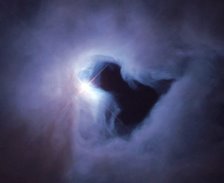







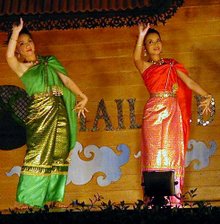





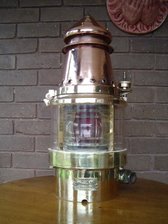




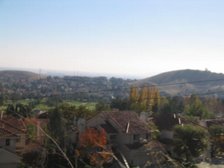

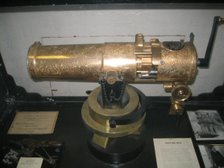












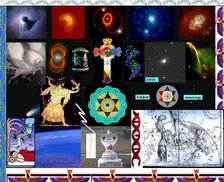
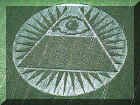

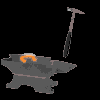


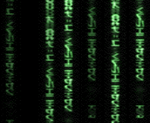

























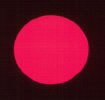
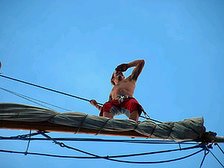
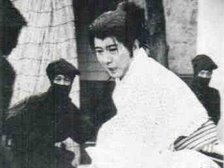




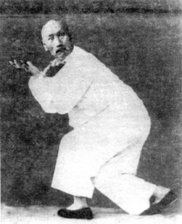


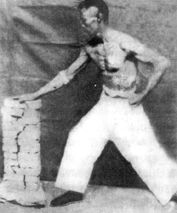


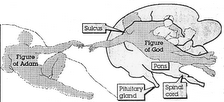
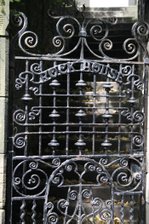

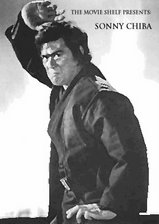

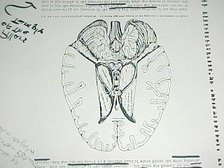

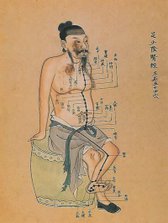
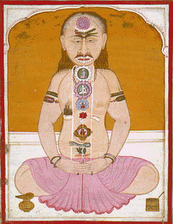






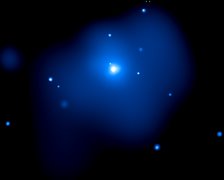
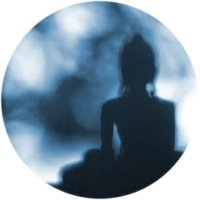



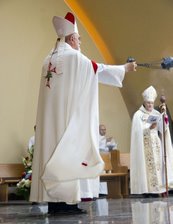
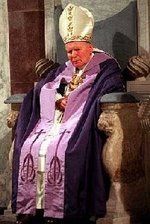








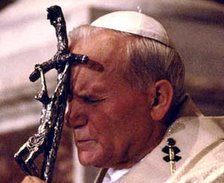
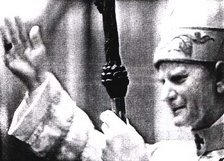




















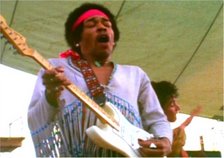
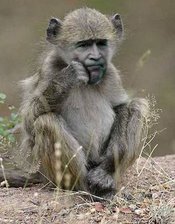

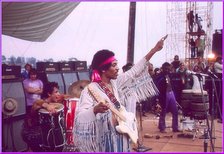










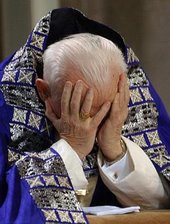




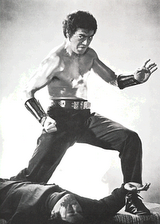


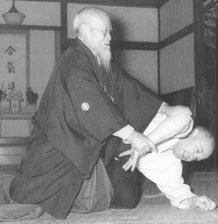
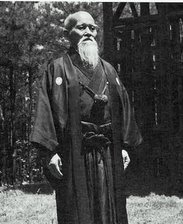







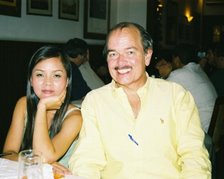







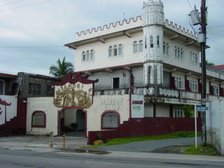
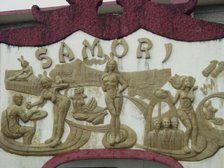




















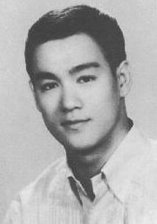
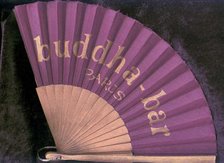
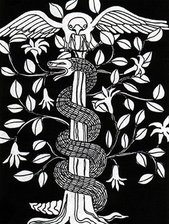



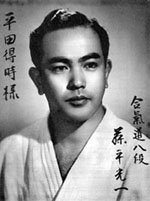




1 comment:
the two serpents are prana,apana
one from tongue tip to navel,
other from navel to anus(silver cord)
the three glands pineal piturity thelamus are prana apana samana fusion.
thereby head to heels breathing from backside..
Post a Comment